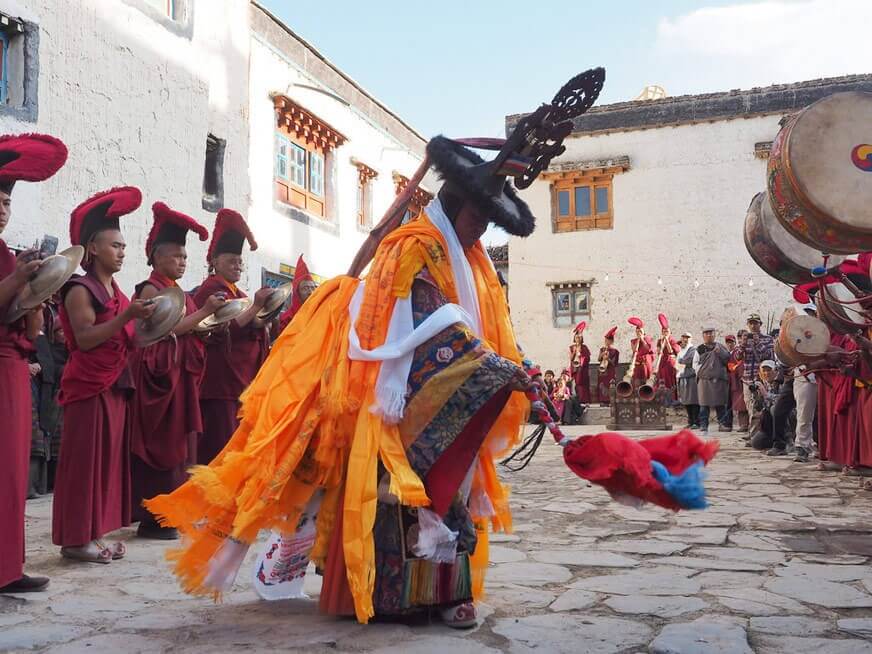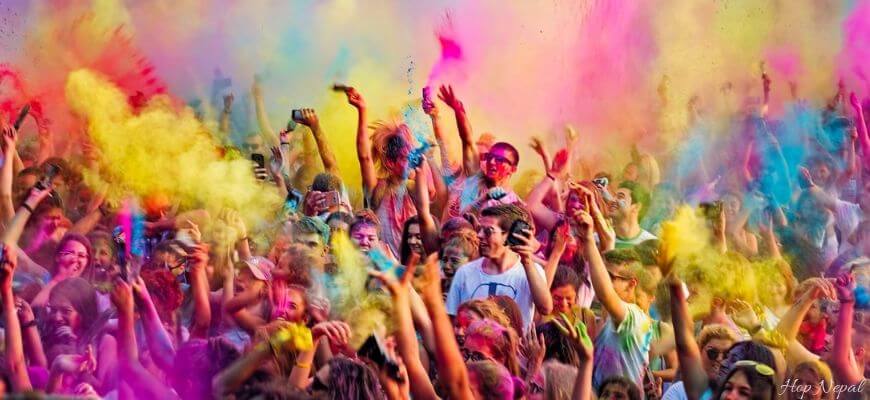If culture sets your heart racing, Nepal’s trending festivals are calling your name. Growing up in the rugged hills of Nepal, I still recall the electric buzz that transformed our cities—the streets alive with color, the air thick with chants, and nights aglow with warmth. These celebrations weave a vibrant tapestry of tradition across the land, stretching from bustling lowlands to the misty high Himalayas. The sights, sounds, and smells have always captivated me since childhood, drawing me into a world of community and heritage. Nepal’s trending festivals span every corner, and this trending festivals in Nepal guide unwraps their magic with practical steps to immerse yourself, drawn from the land I call home. Ready to step into this chaotic, charming adventure?
1. Holi – A Burst of Color
📍 Terai & Kathmandu | March
Holi brings a burst of color to Nepal in late February or early March. It marks spring’s arrival with a fun, chaotic celebration. People throw colored powders and splash water, turning streets into a rainbow. In Kathmandu and Pokhara, you’ll hear drums and folk music as crowds dance. Savor local sweets like sel roti and gujiya shared by neighbors. It’s a lively festival that welcomes everyone. Wear old clothes and join the fun! For travel tips, check Nepal Tourism Board for festival updates.
2. Dashain – Triumph and Togetherness
📍 Everywhere | Sept–Oct
Dashain is Nepal’s largest festival, lasting 15 days in September or October. In 2025, it runs from September 22 to October 1. It celebrates the victory of good over evil, honoring Goddess Durga’s triumph. Families come together to share tika—a red mark on the forehead—and jamara, sacred barley grass. You’ll see kite flying, bamboo swings, and big feasts with goat curry and rice. Cities like Kathmandu buzz with energy, while villages offer a quieter charm. It’s a great time to visit Nepal and feel its family spirit.
For more details, explore Visit Nepal.

3. Tihar – A Glow of Gratitude
📍 Nationwide | Oct–Nov
Tihar lights up Nepal for five days in October or November. In 2025, it’s from October 18 to 23. This festival honors deities, animals, and siblings. Homes glow with oil lamps, and streets are decorated with marigolds and rangoli designs. You’ll see locals offering treats to crows, dogs, and cows, showing gratitude. On Bhai Tika day, siblings exchange tika and gifts. Deusi-Bhailo singing fills the air with joy. It’s a warm, glowing celebration you can join in cities like Kathmandu.
For travel gear, check Lonely Planet.
4. Indra Jatra – Kathmandu’s Rain Dance
📍 Kathmandu | Sept
Indra Jatra is a vibrant festival in Kathmandu, held in August or September. It’s a time to pray for rain and honor the living goddess Kumari. Her chariot procession through Basantapur is a highlight—arrive early for a good spot. You’ll also see Lakhe dancers in colorful masks performing in the streets. After, explore Hanuman Dhoka and taste local snacks with the crowd. The festival mixes ancient traditions with lively energy. It’s a perfect way to experience Kathmandu’s cultural heartbeat during your visit.
5. Tiji – Mustang’s Mystic Ritual
📍 Lo Manthang, Upper Mustang | May
Tiji is a Buddhist festival in Upper Mustang, happening in May. It tells the story of a deity chasing demons through colorful dances. Held in Lo-Manthang, this three-day event draws travelers to its remote setting. You can watch the performances, visit monasteries, and share meals with locals. The spiritual vibe is strong, set against Mustang’s rugged landscape. If you’re looking for a unique cultural experience, Tiji offers a deep dive into Buddhist traditions. It’s a journey worth the trek!
✨ Insider tip: You’ll need a special permit to get to Upper Mustang. Totally worth it.

6. Mani Rimdu – Everest’s Sacred Dance
📍 Tengboche Monastery, Solukhumbu | Oct–Nov
Mani Rimdu takes place in the Everest region, usually in October or November. This Sherpa festival at Tengboche Monastery features masked dances and prayers. It celebrates Buddhist teachings with vibrant performances. Travelers can trek to the monastery, join the chants if invited, and feel the mountain’s peace. The combination of spirituality and stunning Himalayan views makes Mani Rimdu special. It’s a great festival for those who want culture and adventure in one trip.
🌄 Trek + Culture Combo: Time your Everest Base Camp trek with Mani Rimdu for a truly unforgettable journey.
Is It Safe to Travel During Nepal’s Festivals?
Absolutely — and in many ways, festivals enhance your travel experience. But like any destination during big celebrations, there are things to keep in mind.
✅ What You Should Know:
- Crowds: Major festivals like Dashain and Tihar bring in massive local participation. Expect delays in transportation and packed streets, especially in cities.
- Accommodation: During peak festival periods, especially in tourist hubs like Kathmandu or Pokhara, hotels can book out quickly. Plan ahead.
- Transport: Bus and flight availability might be limited. Book early, especially for long-distance travel around Dashain or Lhosar.
- Respect Local Customs: Every festival has religious and cultural significance. Dress appropriately, ask before photographing rituals, and follow the lead of locals.
Unleash the Spirit: Insider Secrets for Nepal’s Festival Adventures
Make the most of these celebrations with tips straight from my Nepali roots:
- 🎉 Join in with locals — many are happy to explain the meaning of a ritual or invite you to share food.
- 👟 Wear comfortable clothes and shoes, especially during parades or street processions.
- 🧴 Bring water, sunscreen, and a scarf or mask — Holi, for example, can get messy (and colorful!).
- 📸 Ask before taking photos, especially in temples or during sacred moments.
- 🕊️ Stay calm in large crowds and keep an eye on belongings.
- 📆 Check festival dates beforehand as they follow the lunar calendar and vary yearly.
The land bursts with color, family ties, glowing lights, ancient dances, mystic rituals, and mountain spirituality. These trending festivals in Nepal beckon travelers with their diversity. Perfect for a quick dip or a deep dive—which one pulls at your heart? Drop your thoughts below!






0 Comments